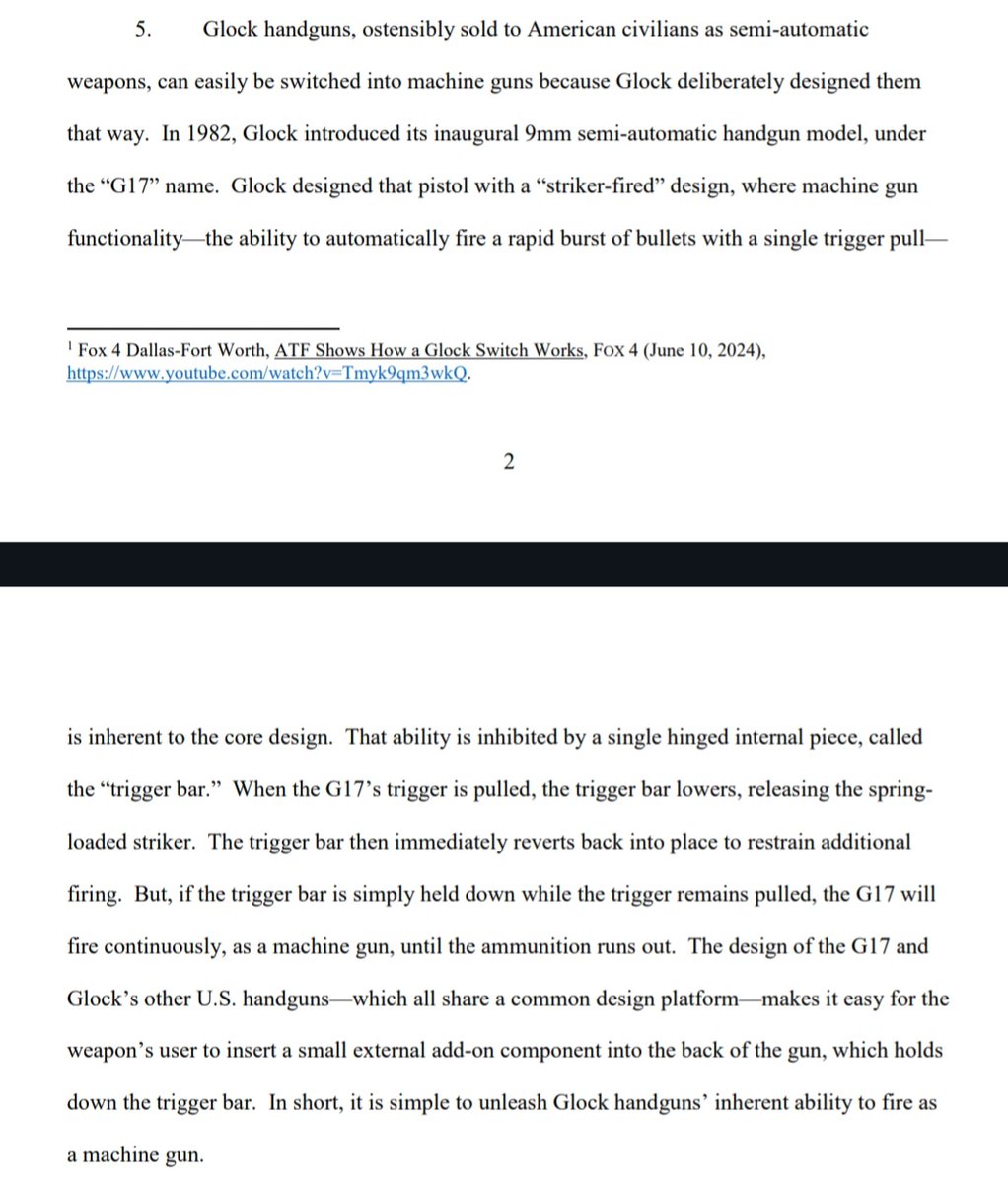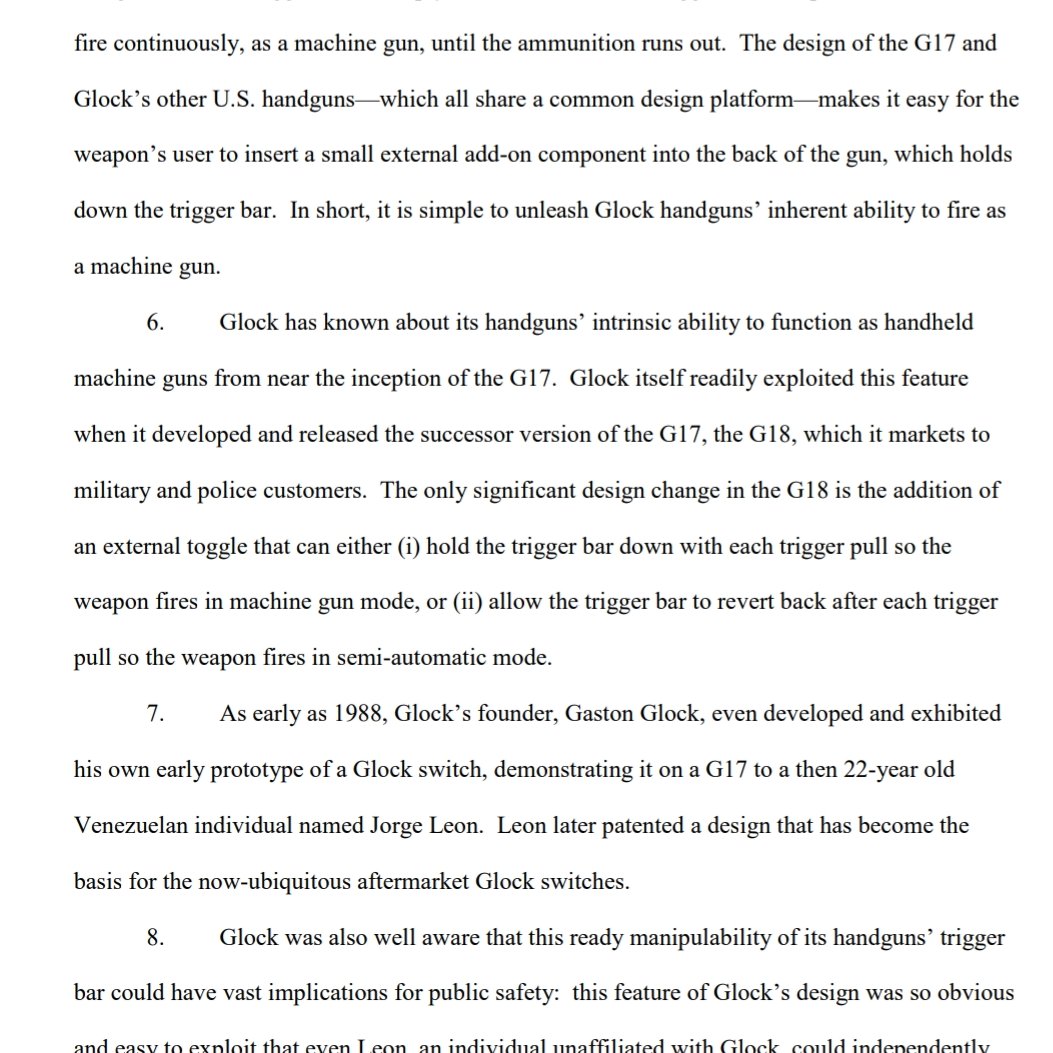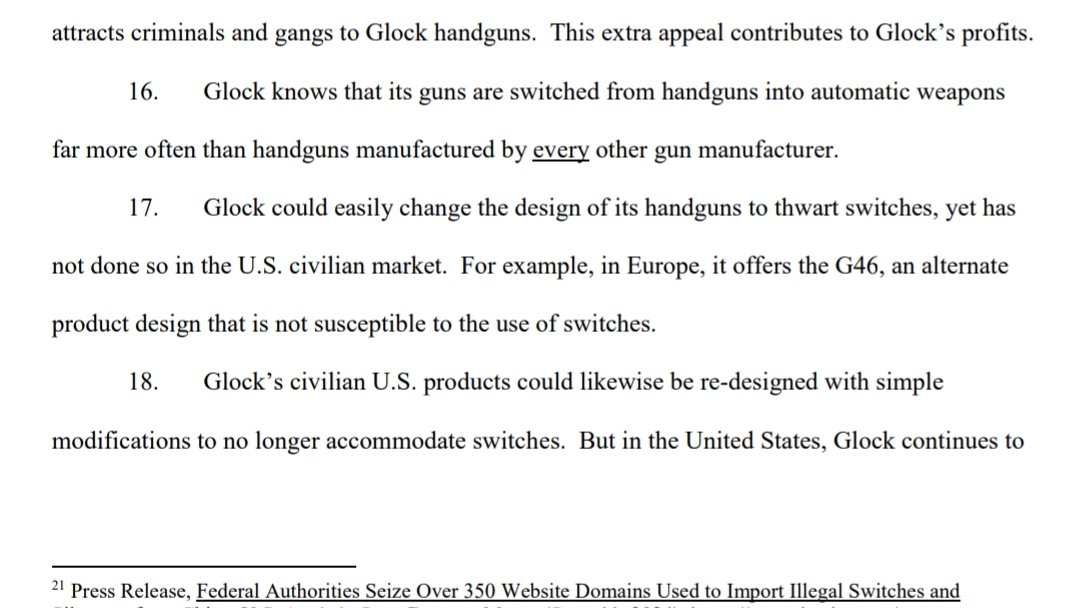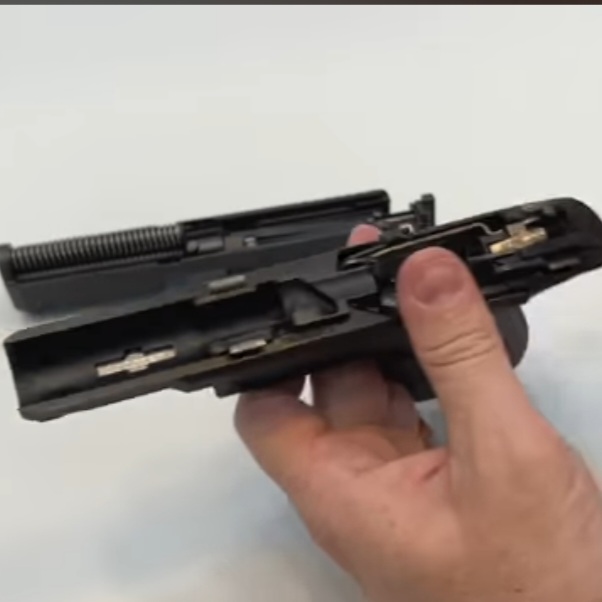Imagine filing lawsuit against Glock, getting five paragraphs in, and admitting you fundamentally don't understand how the gun even works.
Holding down the trigger bar will cause a dead trigger - not fire the gun repeatedly. Embarrassing.
Holding down the trigger bar will cause a dead trigger - not fire the gun repeatedly. Embarrassing.
https://twitter.com/NewJerseyOAG/status/1867239915894796420

Fundamental misunderstanding continues. The G18 achieves auto fire differently than a G17 with a switch does. The trigger bar isn't "held down" in either case, though.
If holding down the trigger bar is all that was required, you wouldn't need a switch at all.
If holding down the trigger bar is all that was required, you wouldn't need a switch at all.

The G46 has the same dastardly trigger bar that works in the same dastardly way. Making a switch for a G46 wouldn't be fundamentally different than making one for a G17. But don't worry, New Jersey says the G46 is cool. 



Me whenever I don't know how springs work. Me when I'm the master of Glock knowing. Me when I'm a lawyer getting paid to lawsuit and I just make stuff up. 

If "remaining lowered" is all that it took, why don't Glocks go full auto if you assemble them without the trigger bar at all? Permanently lowered if it isn't installed. Shutting the slide should rip the whole mag, right? 

• • •
Missing some Tweet in this thread? You can try to
force a refresh
















